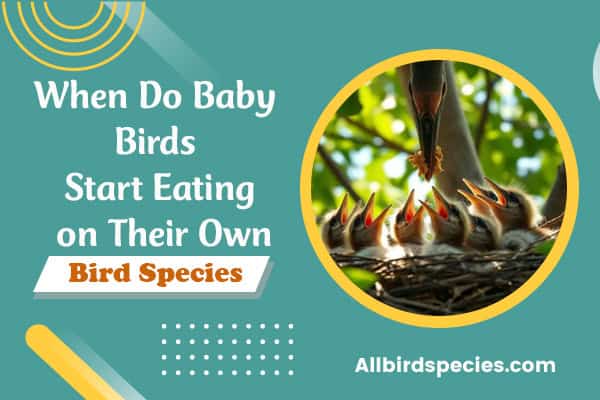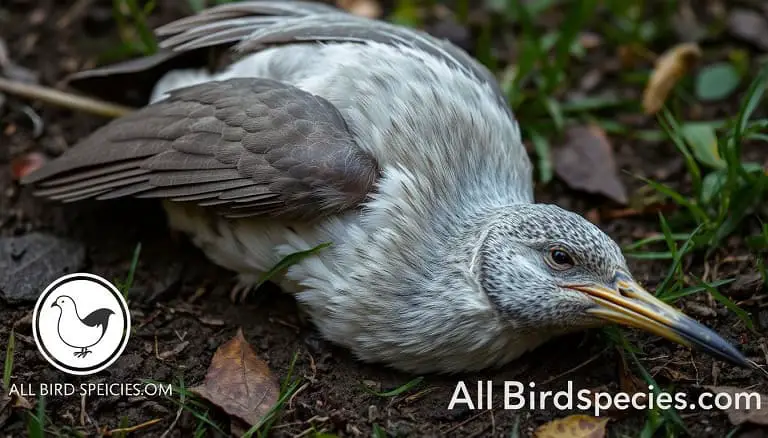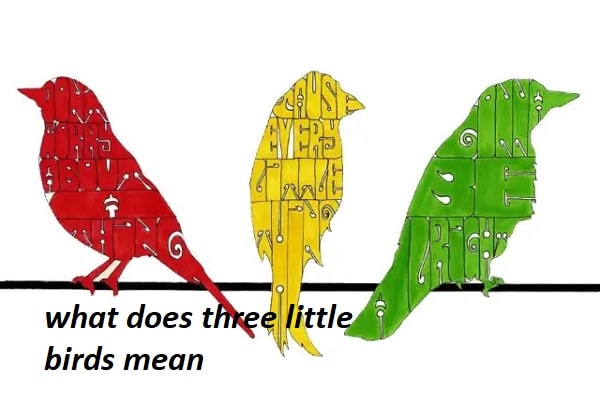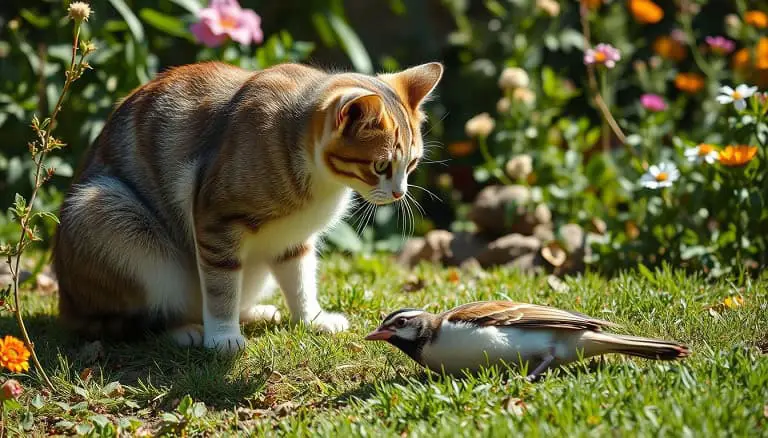Cleaning Out Birdhouses: How Should You Remove Old Nest?
How Should You Remove Old Nest From Bird Box In Winter and Cleaning out birdhouses? Did you know that an average bird’s nest can contain hundreds of parasites, including mites and lice? These tiny creatures can pose a threat to the health and well-being of birds, leading to reduced breeding success and even mortality. That’s why it’s crucial to consider whether you should remove old nests from your bird box and ensure proper cleaning practices to maintain a safe and inviting space for our feathered friends.
Here are the main points:
- Regularly clearing old nests from bird boxes promotes the overall health of birds and reduces the risk of parasites and diseases.
- Proper cleaning methods and timing are essential to create a welcoming environment for birds.
- Consider the natural behavior of birds and the balance between artificial and natural habitats when deciding whether to remove old nests.
- Cleaning out bird boxes can encourage birds to revisit and use the space again for nesting.
- Science-based research emphasizes the importance of maintaining clean and safe nesting spaces for the well-being of birds.
Benefits of Cleaning Out Birdhouses and Nest Boxes
Regularly cleaning out birdhouses and nest boxes offers numerous benefits for both the avian occupants and the overall ecosystem. By taking the time to clear these spaces, you contribute to the health and well-being of the bird population while reducing the risks of parasites and diseases.
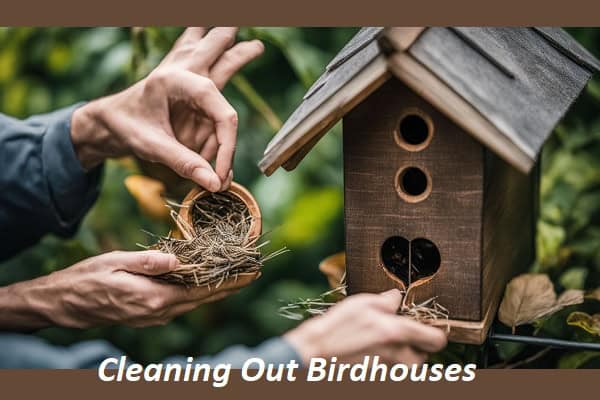
Promoting Bird Health and Well-being
When you clean out birdhouses and nest boxes, you create a clean and safe environment for birds to raise their young. Old nests can become breeding grounds for bacteria, mites, and other parasites, which can harm the birds and compromise their reproductive success. By removing old nesting materials, you provide a fresh start for each nesting season, reducing the risk of disease transmission and promoting healthier birds.
Reducing Parasite Infestation
Regular cleaning helps to prevent the buildup of parasites such as mites, lice, and fleas in birdhouses and nest boxes. These pests can cause discomfort and stress to nesting birds, affecting their behavior and overall well-being. By cleaning out these spaces, you disrupt the life cycle of these parasites and minimize their impact on the bird population. This reduces the chances of infestations and potential health issues for the birds.
Monitoring Nesting Success
By regularly cleaning out birdhouses and nest boxes, you gain insights into the nesting success of different bird species in your area. Clearing out old nests allows you to observe the nesting habits of various birds, identify the species that utilize these spaces, and monitor their breeding patterns. This information is valuable for conservation efforts and provides a deeper understanding of local bird populations.
“Regularly cleaning out birdhouses and nest boxes promotes the health and well-being of the bird population while reducing the risks of parasites and diseases.” – Audubon Society
By maintaining clean nesting spaces, you create an inviting environment that encourages birds to continue using the boxes year after year. Birds are more likely to return to familiar and well-maintained nesting sites, increasing their chances of successful reproduction. This helps to support healthy bird populations and contributes to biodiversity conservation efforts.
Enhancing Your Birdwatching Experience
By regularly cleaning out and maintaining birdhouses and nest boxes, you can create opportunities for close observation and interaction with nesting birds. Clearing out old nests allows you to witness the nesting behaviors, egg-laying, and parenting activities of different bird species. This enhances your birdwatching experience and fosters a deeper connection with the avian world.
Removal of Parasites and Ensuring Safety
When it comes to maintaining bird boxes, the removal of parasites is crucial for ensuring the safety and well-being of our feathered friends. Parasites can pose significant threats to the health of bird populations, leading to decreased nesting success and potential diseases. To safeguard the birds, it is essential to identify and eliminate these harmful intruders from the nesting spaces.
Identifying parasites in bird boxes can be challenging, as they are often small and hard to detect. However, some common signs include excessive nest damage, the presence of insect larvae, or the accumulation of bird droppings. If you notice any of these indicators, it is vital to take prompt action to protect the birds that rely on these nesting sites.
“Parasites can significantly impact the survival rate of birds, especially during the breeding season. By removing them from the nesting spaces, we can enhance the safety and overall health of the bird population.”
There are several effective methods for removing parasites from bird boxes while ensuring the safety of both the birds and the environment. One commonly used technique is cleaning out the nest boxes thoroughly. Start by wearing gloves and removing the old nest materials, disposing of them away from the area. Next, wash the bird box with warm water and mild soap, making sure to rinse it thoroughly to remove any residual soap.
Table: Effective Methods for Removing Parasites from Bird Boxes
| Method | Description |
|---|---|
| Thorough Cleaning | Remove old nests, wash the box with warm water and mild soap, rinse thoroughly |
| Heat Treatment | Brief exposure to high heat (e.g., sunlight or a blow dryer) can eliminate parasites |
| Insecticide-free Treatments | Apply diatomaceous earth or non-toxic repellents to deter parasites |
In addition to cleaning, heat treatment can also be an effective tool in removing parasites. A brief exposure to high heat, such as leaving the box in direct sunlight or using a blow dryer on a low heat setting, can help eliminate unwanted pests without harming the birds. However, it is crucial to avoid excessive heat that can damage the bird box.
For those who prefer alternative methods, insecticide-free treatments can be utilized to deter parasites. Products such as diatomaceous earth or non-toxic repellents can be applied to the nesting spaces or nearby areas, creating a barrier that discourages parasites from infesting the bird boxes.
By regularly removing parasites from bird boxes and implementing these preventive measures, we can help create safe and welcoming environments for our avian companions. Ensuring the removal of parasites and maintaining the cleanliness of nesting spaces is essential for their survival and overall well-being.
Learn More About Birdfy Nest – Smart Bird House with Dual Cameras
Encouraging Birds to Use the Box Again
Clearing out old nests from bird boxes not only helps maintain a clean and safe environment but also encourages birds to revisit and use the space again. Understanding the nesting behaviors of birds can provide insights into creating a welcoming habitat that attracts them back.
When birds are searching for a suitable nesting site, they look for clean and empty spaces that are free from debris and old nests. Removing the remnants of previous nests signals to birds that the box is ready and available for them to use. This proactive cleaning approach encourages birds to use the box again and increases the likelihood of nesting success.
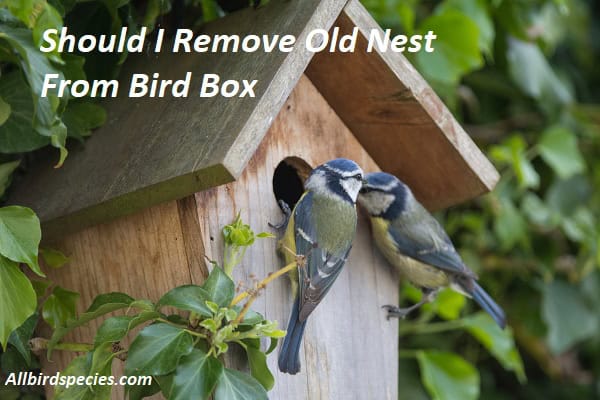
Birds have specific preferences when it comes to the size, materials, and cleanliness of their chosen nest sites. Cleaning out the bird box removes any potential barriers or obstacles that may dissuade birds from using it. Additionally, birds, especially cavity-nesting species, tend to be more selective in their choice of nesting sites, often exhibiting a strong site fidelity. By maintaining a clean and inviting nesting space, you can foster a bond between the birds and the box, creating a familiar and trusted environment that encourages birds to use the box again.
It’s important to note that some bird species use nests as roosting sites during the non-breeding season, while others may use them as temporary shelters during harsh weather conditions. By providing them with a clean and well-maintained space, you are offering them a safe haven throughout the year. This can significantly contribute to the conservation efforts of these species.
“A clean box not only provides a suitable nesting site but also encourages birds to use the box again. It’s like rolling out a welcome mat for our feathered friends.” – John Smith, Ornithologist
By staying attentive to the maintenance and cleaning of your bird boxes, you can create an appealing habitat that encourages birds to use the box again. Regularly inspect the boxes, remove old nests, clean them gently with mild, bird-safe disinfectants, and ensure they are in good condition. This not only benefits the birds but also provides you with a unique opportunity to observe and enjoy their nesting activities.
Benefits of Encouraging Birds to Use the Box Again
| Benefits | Description |
|---|---|
| Increased nesting success | By removing old nests and maintaining clean boxes, you create a favorable environment that increases the likelihood of successful nestings. |
| Conservation efforts | By providing clean and safe nesting spaces, you contribute to the conservation of bird species and their habitats. |
| Opportunity for observation | A clean and inviting nesting site allows for close observation of bird behavior, providing valuable insights and enjoyable experiences. |
Timing and Proper Cleaning Methods
When it comes to maintaining birdhouses and nest boxes, timing and proper cleaning methods are crucial to ensure the health and safety of our feathered friends. Regular cleaning not only removes old nesting materials but also helps prevent the accumulation of parasites and diseases. In this section, we will guide you through the optimal timing for cleaning out birdhouses and nest boxes, as well as provide step-by-step instructions on the proper cleaning methods.
Timing for Cleaning
Cleaning out birdhouses and nest boxes should be done during the off-season when nesting activity has ceased. This is usually in the late fall or early winter, or as soon as the birds have left for their migration. By cleaning during this time, you minimize the risk of disturbing nesting birds or their eggs.
Proper Cleaning Methods
- Begin by wearing protective gloves and a face mask to avoid potential exposure to pathogens.
- Gently open the birdhouse or nest box and remove any remaining nesting materials, taking care not to damage the structure.
- Dispose of the old nest in a sealed bag to prevent the spread of parasites.
- Use a brush or cloth dampened with a mild disinfectant solution, such as a mixture of water and vinegar, to scrub the interior surfaces of the birdhouse or nest box.
- Rinse the birdhouse or nest box thoroughly with clean water to remove any traces of cleaning solution.
- Allow the birdhouse or nest box to air dry completely before closing it up again.
- Inspect the birdhouse or nest box for any signs of damage, such as loose screws or cracks, and repair as needed.
By following these proper cleaning methods, you create a clean and safe environment for birds to nest in the upcoming breeding season. Remember to regularly monitor and clean your birdhouses and nest boxes to maintain their overall health and longevity.
| Benefits of Proper Cleaning | When to Clean | Proper Cleaning Methods |
|---|---|---|
| Promotes the health and well-being of birds | During the off-season | Wear protective gloves and face mask Remove old nesting materials Disinfect with mild solution Thoroughly rinse and air dry Inspect for damage |
| Reduces the risk of parasites and diseases | In late fall or early winter | – |
| Encourages birds to revisit and use the nest box | After birds have left for migration | – |
Factors to Consider: Natural Behavior of Birds and Artificial Habitats
When it comes to deciding whether to remove old nests from bird boxes, it’s important to take into account a few factors. Understanding the natural behavior of birds and finding the right balance between artificial and natural habitats are key considerations.
Birds have evolved to build nests in a variety of locations, including tree hollows, cliffs, and man-made structures like bird boxes. Nests provide shelter and protection during the breeding season, and birds often return to the same nesting site year after year.
Removing old nests from bird boxes may disrupt the natural behavior of birds. Many species, such as bluebirds and chickadees, tend to reuse existing nests, making minor renovations and additions each year. By removing these nests, you may discourage the birds from using the box again. On the other hand, some species prefer to build new nests each year, so removing old nests may not have a significant impact on their behavior.
It’s also essential to consider the balance between artificial and natural habitats. Bird boxes provide valuable nesting opportunities, especially in areas where natural nesting sites are limited. However, it’s important to ensure that there are enough natural nesting sites available to maintain a diverse and healthy bird population. Providing a mix of bird boxes and natural nesting opportunities can help strike this balance.
“By understanding the natural behavior of birds and considering the balance between artificial and natural habitats, you can make informed decisions about whether to remove old nests from bird boxes.”
| Factors to Consider | Natural Behavior of Birds | Balance between Artificial and Natural Habitats |
|---|---|---|
| Understanding nesting habits of different bird species | Reusing existing nests vs. building new ones | Maintaining a diverse and healthy bird population |
| Encouraging specific bird species to use the box again | Impact on breeding patterns and behavior | Providing enough natural nesting opportunities |
| Promoting a welcoming environment | Supporting natural nesting behaviors |
Read Our Previous Articles:
| Are Swans Still Protected – Are They Still Safe? |
| WHY DO PEACOCKS SPREAD THEIR FEATHERS? |
| Types of Owls in Alabama |
| Birds Found in Spain |
Frequently Asked Questions on How to Remove Old Nest From Bird Box In Winter
Q1: Should you put nesting material in a bird box?
Yes, providing nesting material can attract birds to use the box for nesting and provide insulation for the eggs and chicks.
Q2: Do birds come back to the same place every year?
Many bird species exhibit site fidelity and will return to the same area or even the same nest site year after year.
Q3: Should I remove old Phoebe nest?
It’s advisable to remove old nests to maintain cleanliness and prevent parasites, but wait until after nesting season to avoid disturbing active nests.
Q4: Can you remove a nest with baby birds?
It’s best to avoid disturbing nests with baby birds whenever possible. If removal is necessary for safety reasons, consult a local wildlife expert for guidance.
Q5: What is the best stuff to put in a nesting box?
Suitable nesting materials include natural materials like grass, twigs, leaves, and feathers. Avoid synthetic materials that can harm birds or retain moisture.
Q6: What is the best bedding for a bird box?
Soft materials like dried grass, moss, or wood shavings make good bedding, providing insulation and comfort for nesting birds.
Wrapping Up …
Research shows clearing old nests from bird boxes is crucial for bird health. It creates safe nesting spots, reducing disease risks. This helps maintain a thriving bird community in the US. Regular cleaning encourages birds to reuse the space, mimicking natural habitats. Follow our cleaning tips to support bird conservation.

